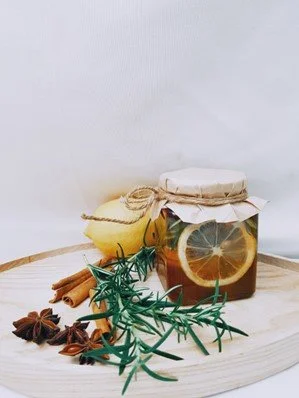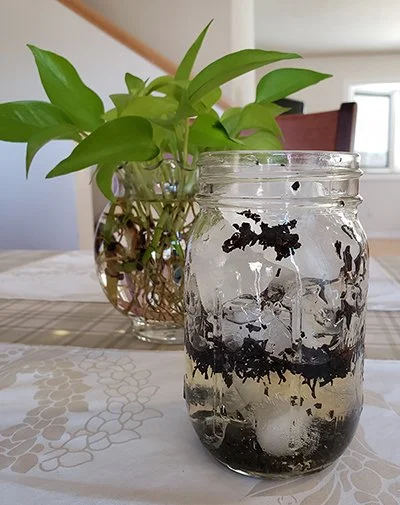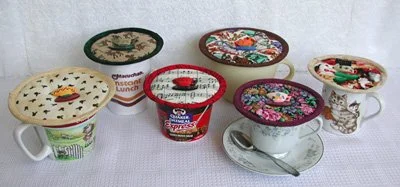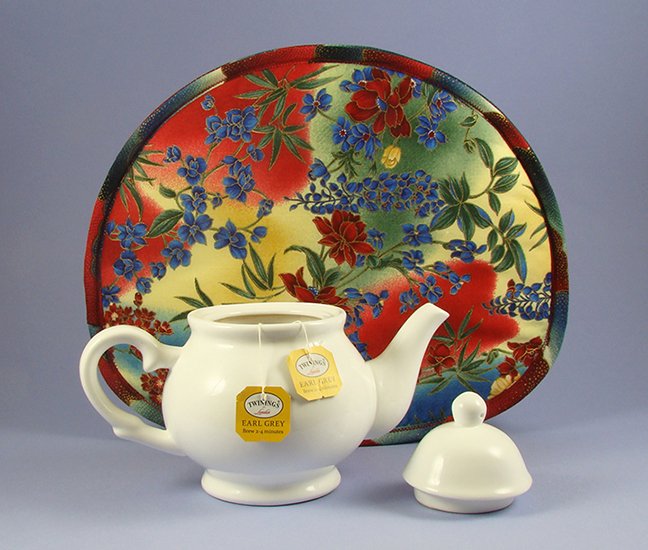New Options for Tea Drinkers: Cozy Coverage to Widen Your World
By Perry Luckett, Tea Man Too
Millions of people around the world enjoy tea, and I’m assuming you’re one of them. In fact, I’m guessing you’re here because you want different ways to consume your favorite beverage, so here are some new options and trends emerging in the tea world.
Loose-leaf tea in your teapot covers the best way to up your game
As people become more interested in the art and science of tea, high-quality loose-leaf tea has become more popular. Loose-leaf tea is typically of higher quality than tea bags, and it allows tea drinkers to experience the tea’s full range of flavors and aromas.
High-quality loose-leaf tea is distinguished from others by its origin, processing, freshness, leaf grade, and taste:
1. Origin: This loose-leaf tea is typically sourced from specific regions and estates known for producing exceptional teas. These teas are often grown at high elevations, in nutrient-rich soil, and in ideal climatic conditions that help to develop their unique flavor profiles.
2. Processing: It’s typically made using traditional processing methods, such as hand-picking, withering, rolling, and oxidation. These methods help to preserve the natural flavors and aromas of the tea leaves, resulting in a more complex and nuanced cup of tea.
3. Freshness: Producers typically package this tea and sell it in small batches to ensure freshness. They often hand-pack leaves and seal them in air-tight containers to preserve their flavor and aroma.
4. Leaf Grade: Whole tea leaves or large leaf fragments go into high-quality tea, as opposed to tea dust or fannings. Whole tea leaves have more complex flavors and aromas than smaller leaf particles, resulting in a more enjoyable cup of tea.
5. Taste: High-quality loose-leaf tea is known for its superior taste and aroma. The flavors are often complex, nuanced, and balanced, with a long-lasting finish. The tea is also free from any harsh or bitter flavors, which can suggest low quality.
Here are some resources for learning more about high-quality loose-leaf tea:
1. The Tea Spot: This company specializes in loose-leaf teas and offers a wide selection of organic and fair trade options. They also have a blog with articles on tea education and recipes for tea-infused foods and drinks.
2. Adagio Teas: Adagio Teas sources their teas directly from farmers and artisanal tea growers from around the world. They have a large selection of loose-leaf teas and also offer tea accessories, such as teapots, cozy covers, and infusers.
3. Harney & Sons: This family-owned company has been in the tea business for over 30 years and offers various high-quality teas, including rare and seasonal blends. They also have a tearoom in Millerton, New York, where visitors can sample their teas and attend tastings. Note: I buy all our loose-leaf teas from Harney.
4. Camellia Sinensis: This Canadian company is dedicated to promoting and preserving the art of tea. They offer a wide selection of high-quality loose-leaf teas, as well as tea education and workshops. They also have a tea house in Montreal where visitors can enjoy their teas and learn about tea culture.
5. TeaSource: TeaSource gets their teas directly from tea growers and estates around the world, ensuring high quality and freshness. They offer a wide selection of loose-leaf teas, including rare and single-origin teas. They also have a blog with articles on tea education and industry news.
Cold-brewed tea is a cozy journey to smoothness
Cold brew tea has become increasingly popular in recent years. It involves steeping tea leaves in cold water for several hours or overnight, which produces a smoother, less bitter taste than hot-brewed tea. Cold brew is also lower in caffeine and less acidic, making it a great option for people with sensitive stomachs.
Cold brewing tea is a simple one-step process because you don’t have to start with boiling water. Instead, you can steep your tea in cold or room-temperature water. This method has two key advantages:
• It can preserve elements that are easily damaged or dispersed into the air, such as the oils in peppermint and other aromatic plants.
• It lessens the astringency (dryness, tightening, and puckering sensations) you can find in many iced teas
For example, cold brew peppermint tea has fewer astringent tannins and a lighter, more complex peppermint flavor. [AU]
Emma Mannheimer’s informative article (cited in the Resources section below) draws on several cold brew experts to discuss its methods and advantages. As tea sommelier Jee Choe points out, “Loose tea is usually the highest-quality tea and it makes a much better iced tea than teabags.” He runs the tea blog “Oh, How Civilized” where he has posted his popular guide on brewing iced tea. Choe says the cold brew method is best because it's easy and “results in the best-tasting iced tea—it’s smooth, full-bodied, and packed with flavor.”
Jeannie Liu, owner of Seattle’s Miro Tea cold brews teas of every type: black, green, white, oolongs, and more. She says teas with “a lot of nuance” lend themselves especially to cold brewing, which “draws out those flavors and displays them much more accurately,” with a natural sweetness that results when you don’t apply heat to them. [EM]
How to cold brew tea
The slow extraction of cold brew takes time, making it an excellent make-ahead method. Green tea requires only about two hours of brew time, but other teas will take 8 to 24 hours to extract. To cold brew tea, simply add loose-leaf tea to a sealable container (glass is preferable because plastic can stain) followed by either cold or room-temperature water, and let it steep in the refrigerator.
A typical ratio you can easily scale up is 1 teaspoon of tea to 8 ounces of water, but many experts suggest adding slightly more tea when cold brewing—perhaps a more rounded teaspoon for each 8 ounces. That’s because you can run the risk of under-brewing it or having to brew for a much longer time to extract its flavor. At some point the tea won’t give you any more flavor from the leaf, so a good practice is to taste your cold brew throughout the brew period to determine your preference and stop brewing when it’s to your liking. You can then strain the batch and start enjoying your tea.
Stored in an airtight container and refrigerated, your cold brew tea can last for up to several days, although fresh is best. Most experts recommend you drink it within 24 to 48 hours for the best taste experience. [EM]
Koridashi method for cold brew tea. Original photo by Perry Luckett.
You may want to try another way of cold brewing tea: the Koridashi method, which originated in Japan. With this method, you place ice cubes in a glass one layer at a time, sprinkling part of two level teaspoons of loose-leaf tea over each layer of cubes until glass is full. Let ice melt completely to create a glass of cold brew tea. Swirl or stir once melted and strain to drink. It’s a relaxing and contemplative approach that forces you to slow down and take a break from your day. If you find the idea of a more intentional process of brewing tea appealing, you might want to know that in some cultures cold brew teas are even steeped in moonlight! [AU]
Here are some resources you can explore to learn more about cold brew tea:
1. Tea Sommelier's Guide to Making Cold Brew Tea - This article by World Tea News provides a step-by-step guide on how to make cold brew tea and offers tips on how to select the right tea for cold brewing.
2. How to Make Cold Brew Tea: The Ultimate Guide - This comprehensive guide by Art of Tea covers everything from the benefits of cold brewing tea to the equipment needed and the different types of teas that work best for cold brewing.
3. Cold Brew Tea: What It Is, Why It's Trending, and How to Make It - This article by Bon Appétit magazine explains why cold brew tea has become so popular and offers some recipes for making it at home.
4. Cold Brew Tea 101: How to Make the Best Cold Brew Tea - This guide by The Tea Spot offers a detailed overview of cold brewing tea and tips on how to make it.
5. Cold Brew Tea: What It Is, How to Make It, and Why You Should Drink It - This piece by Food & Wine magazine overviews cold brew tea and offers some recipes for making your own.
As a late-breaking tip, if you don’t want to wait a day in order to enjoy cold brew tea, you might try new technology from Shine Kitchen Co. at Tribest, featured at www.worldteanews.com/products. The Rapid Cold Brew Coffee & Tea Machine uses vacuum extraction technology to eliminate the 12-hour-long steeping process. It delivers fresh, cold-brewed tea and coffee in as little as 10 minutes. The machine offers a full-flavored extraction and can brew up to 40 ounces of cold coffee or tea in light, medium, strong, or extra strength.
The Rapid Cold Brew Machine works with either cold or room-temperature water to supply up to five servings of cold brew. Unlike competing models which spin, vibrate or heat – yielding a grainy and bitter result – this automatic cold brew machine delivers a superior product in a user friendly way. It comes complete with a pre-measured scoop and easy-to-follow guide. [WTN]
Functional tea blends in your teapot: cozy additions to your cup
Functional tea blends that promote health and wellness have become more popular in recent years. These blends can include herbs and spices like turmeric, ginger, and chamomile that have anti-inflammatory and calming properties. Some blends also contain adaptogens like ashwagandha and reishi, which are believed to help the body adapt to stress.
Here are some resources to help you learn more about functional tea blends:
1. Functional Tea Blends for Health and Wellness - This guide by Tea Forte provides an overview of functional tea blends and their health benefits, including teas for digestion, immunity, and relaxation.
2. Understanding Functional Tea Blends - This article by World Tea News explains the concept of functional tea blends and how they differ from traditional teas.
3. Health Benefits of Functional Teas - This article by The Tea Spot highlights some popular functional tea blends and their health benefits, including teas for detox, energy, and stress relief.
4. How to Make Your Own Functional Tea Blends - This guide by The Spruce Eats provides tips for creating your own functional tea blends using herbs, spices, and other natural ingredients.
5. The Best Functional Tea Blends for Every Need - This article by Byrdie recommends some popular functional tea blends for different health concerns, including teas for inflammation, sleep, and mood.
Plant-based milk tea covers alternatives to dairy milk
With the rise in popularity of plant-based diets, many tea shops now offer plant-based milk options for their milk tea drinks. Almond, soy, oat, and coconut milk are popular alternatives to dairy milk, and they add a unique flavor and texture to traditional milk tea.
Here are some resources to explore for learning more about plant-based milk tea:
1. The Ultimate Guide to Plant-Based Milk Tea - This comprehensive guide by VegNews covers everything you need to know about plant-based milk tea, including how to make it at home, what types of plant-based milk to use, and some popular milk tea recipes.
2. How to Make Vegan Milk Tea - This recipe and tutorial by The Minimalist Baker provides step-by-step instructions for making vegan milk tea using coconut milk and black tea.
3. Dairy-Free Bubble Tea (Bobba Tea) - This recipe by Delish.com uses almond milk to make a dairy-free version of bubble tea, also known as boba tea.
4. How to Make Plant-Based Milk Tea Three Ways - This video tutorial by Hot for Food shows you how to make three different plant-based milk teas using oat milk, almond milk, and coconut milk.
5. Vegan Boba Milk Tea - This recipe by Bigger Bolder Baking uses coconut milk and tapioca pearls to make a delicious vegan version of boba milk tea.
Tea cocktails are a cool and cozy path to flavor
Tea-based cocktails have been popping up on menus at trendy bars and restaurants. These cocktails use tea as a base and are often combined with other ingredients such as fruit, herbs, and spirits to create a unique and flavorful drink.
Here are some sources for learning more about tea cocktails:
1. Tea Cocktails: How to Make Them and Where to Find Them - This article by Liquor.com overviews tea cocktails, including recipes for making them at home and some popular tea-infused cocktails from bars and restaurants.
2. 10 Tea Cocktail Recipes for a Boozy Tea Party - This article by Bon Appétit magazine offers 10 different recipes for tea cocktails, including the classic Earl Grey Martini and a Green Tea Gimlet.
3. The Art of Tea Cocktails - This guide by The Tea Spot provides tips and recipes for creating tea-infused cocktails, including instructions on how to make tea syrups and tea-infused spirits.
4. Tea-Infused Cocktails: The Best of Both Worlds - This piece by Food & Wine magazine explores the trend of tea-infused cocktails and offers recipes for some popular tea cocktails, such as the Jasmine Collins and the Matcha Margarita.
5. Tea Cocktails: 5 Recipes to Get Your Party Started - This article by Serious Eats offers five different recipes for tea cocktails, including a Chamomile Sour and a Hibiscus Margarita.
Overall, you have many new and exciting options to explore. As you do, try another great way to enjoy your tea more by visiting our website at www.koffeekompanions.com, where you’ll find beautiful and functional tea cozies and cup caps (lids) that help hold in heat to enhance your tea-sipping pleasure.
Resources
Besides the guides and articles mentioned in the above topics, I used two articles from the Internet and a feature article on new technology to flesh out this blog post:
Author unknown, “Cold Brew Tea vs. Iced Tea: What’s the Difference?’ http://bit.ly/3ZMRgPG ?, 2023. [AU]
Emma Mannheimer, “Brewing Better Iced Tea,” http://bit.ly/43vccxV , August 30, 2021. [EM]
World Tea News Editor, “New Cold Brew Tea and Coffee Machine Debuts, Features Innovative Technology,” http://bit.ly/3UoDEt2 , Mar 8, 2023. [WTN]




